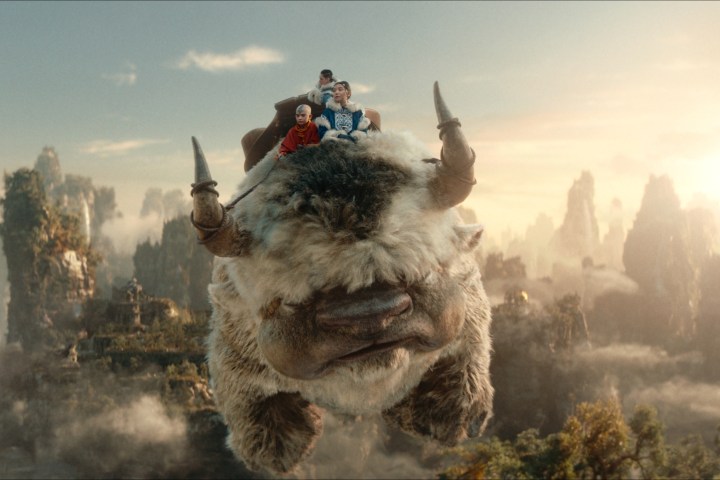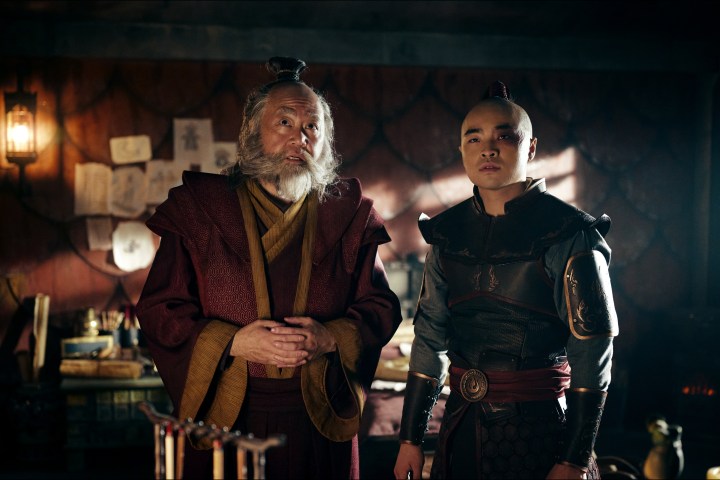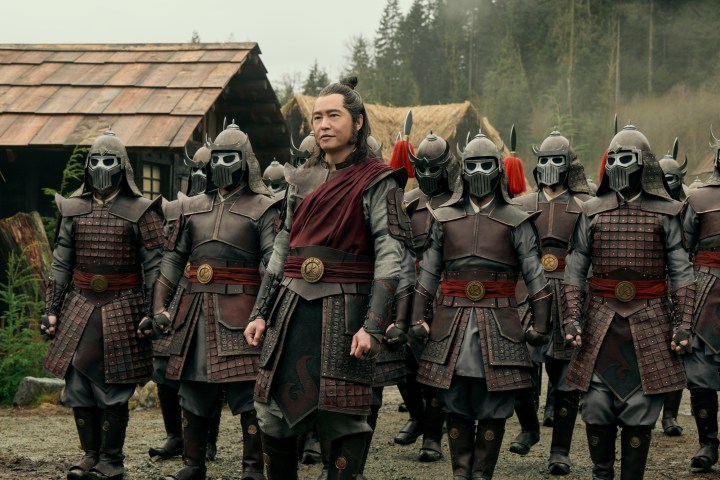“Netflix's Avatar: The Last Airbender is an inoffensive, acceptable live-action reimagining of an animated TV series that seems to justifiably grow more beloved every year.”
- An efficiently streamlined adaptation of Avatar: The Last Airbender
- Dallas Liu and Paul Sun-Hyung Lee's standout performances
- A number of well-choreographed, well-realized set pieces
- Numerous odd, frustrating tonal inconsistencies
- Uneven CGI throughout
- Ludicrous adherence to source material's animated character designs
The odds are stacked firmly against Netflix’s Avatar: The Last Airbender. The new series happens to be an adaptation of one of the most beloved animated shows of the past 30 years, and it isn’t even the first live-action take on it that Hollywood has produced. Fourteen years ago, M. Night Shyamalan’s The Last Airbender was met with derision from critics and fans alike, and time hasn’t been kind to it. The 2010 film’s reputation has only made longtime fans all the more skeptical of the new Netflix adaptation — and their hesitation was only further amplified when Avatar: The Last Airbender creators Michael Dante DiMartino and Bryan Konietzko parted ways with the project over creative differences in 2020.
On top of all of that, Hollywood doesn’t have the best track record when it comes to live-action adaptations of anime and anime-adjacent properties. When you take that into consideration, along with just how much visual effects work that Avatar: The Last Airbender‘s mythical world of fictional kingdoms and elemental benders demands, it’s easy to see why many have long viewed a live-action, episodic take on the animated series a risky gamble, to say the least. It should come as welcome news then that Netflix‘s ambitious Last Airbender adaptation isn’t a complete failure. It is, in fact, perfectly fine, which may very well be the best that viewers could have possibly hoped for.

Avatar: The Last Airbender takes place in a world divided into four separate realms: the Earth, Water, Air, and Fire Kingdoms. Each of the four disparate regions is populated and run by a mix of normal citizens and powerful beings known as “benders,” who have the ability to bend one element — whether it be fire, earth, water, or air — to their will. The kingdoms are meant to be bound in a tentative peace by an individual known as “the Avatar,” who can bend all four elements. The political balance of Avatar: The Last Airbender‘s fictional world is suddenly thrown into chaos, however, when the Fire Nation begins a tyrannical campaign for global domination.
The Fire Nation’s mission is allowed to wreak untold havoc when the world’s latest incarnation of the Avatar, a young Airbender named Aang (Gordon Cormier), goes missing. A century later, Aang’s frozen-in-time body is discovered by a pair of Water Nation siblings, Sokka (Ian Ousley) and Katara (Kiawentiio). Aang’s return leads to the three being furiously hunted by Zuko (Dallas Liu), a banished Fire Nation prince who has been assigned to capture the Avatar by his abusive father, Fire Lord Ozai (Daniel Dae Kim). If Aang has any hope of defeating Zuko and the Fire Nation, he quickly realizes that he’ll have to learn how to bend the water, earth, and fire elements while on the run.
The Last Airbender‘s eight-episode first season is a fairly straightforward adaptation of its animated predecessor’s 20-installment debut season. Despite what some fans may have feared, the Netflix series’ first batch of episodes does a surprisingly strong job of compressing and combining nearly all of its source material’s episodic plots. Showrunner Albert Kim and his team of writers find frequently inventive ways of hitting all the major beats fans could want them to, and they manage to pack in almost every noteworthy character from Avatar: The Last Airbender‘s first season. Some moments — such as a midseason meeting between Aang and one of his Avatar predecessors — feel jammed in, but for the most part, Netflix’s Last Airbender adaptation successfully delivers a more streamlined version of its predecessor’s first season.

Ultimately, the live-action series’ biggest struggles have less to do with its plotting and more with the difficult tonal balancing act that it forces itself to perform. The Netflix show is bright, shiny, and over-the-top in both its style and its darkness. The series’ first season is more unflinchingly brutal than its animated counterpart, but as striking as that initially is, The Last Airbender can only show so many characters being horrifyingly burned alive before a tonal disconnect emerges between its candy-colored aesthetic and its wider thematic concerns.
What partly defines Kim and company’s take on The Last Airbender‘s story is how persistently they focus on the bitterness that many of the characters Aang encounters feel toward him for — whether intentionally or not — abandoning the world for 100 years. That decision immediately lends the Netflix series a level of unflinching emotional realism that the original animated show gradually grew into, but it also demands that the live-action adaptation change specific things about its source material’s plot that it seems unwilling to alter. An important battle between Aang and an elderly Earth Kingdom leader named Bumi (Utkarsh Ambudkar), for example, is filled with much more anger than longtime fans may expect. Nonetheless, the series still makes Ambudkar’s Bumi look just as ridiculous as his animated predecessor (white, overgrown armpit hair and all).
The Last Airbender‘s unwavering adherence to its source material’s visual style is commendable but, at times, mind-boggling. Potentially compelling characters like Bumi are rendered ineffective by the gap between their stories and the cartoonish levels of hair, makeup, and prosthetics that are piled on top of them. That’s particularly true for Amber Midthunder’s Princess Yue, whose narrative importance is overshadowed by one of the worst wigs that has ever been featured on a mainstream television series. Like its costuming and makeup work, The Last Airbender‘s CGI similarly ranges from awe-inspiring to downright ugly. The show looks far more visually pleasing than it has any right to, given its budgetary constraints, but there’s still an inexplicable sheen that covers its entire world, which calls to mind the glossy, uncanny aesthetic that Peter Jackson brought to his Hobbit films (specifically, 2014’s lackluster The Hobbit: The Battle of the Five Armies).

In spite of the Netflix series’ tonal and visual flaws, its core cast members prove to be well-suited for their roles. Cormier slowly but surely cements himself across The Last Airbender‘s first season as a perfect fit for Aang, while Liu and Paul Sun-Hyung Lee turn in the show’s best performances as Zuko and his supportive, wise uncle, Iroh, respectively. Ken Leung also stands out as Commander Zhao, who is wisely depicted in the live-action series as a smarmier and more deliciously cunning villain than the animated version of him. Of the new show’s central performers, only Kiawentiio struggles to fill out her role by failing to bring Katara’s unmistakable spirit and combative spark fully to life on-screen.
What do all of these shortcomings and highlights amount to? An adaptation of Avatar: The Last Airbender that isn’t a full-throated success, nor a complete, Cowboy Bebop-sized disaster. The series repeatedly proves itself capable of matching the scope and mythic-sized storytelling of its source material, but it also falls short of its standards in several ways. Consequently, while both fans and first-time viewers would be better off sticking with the original animated series, those who do check out Netflix’s Avatar: The Last Airbender will find themselves experiencing an adaptation that doesn’t quite soar, but does just enough right to still get off the ground.
Avatar: The Last Airbender season 1 is streaming now on Netflix. Digital Trends was given early access to all of the season’s eight episodes.



